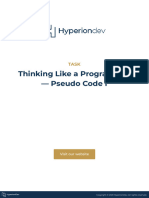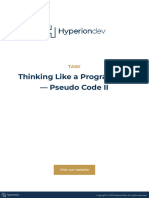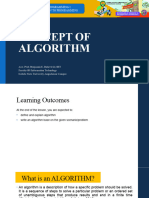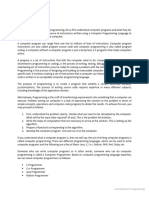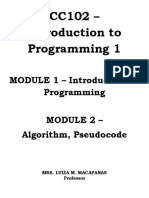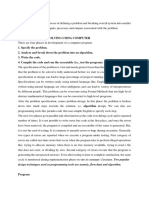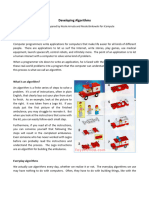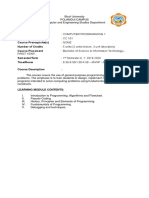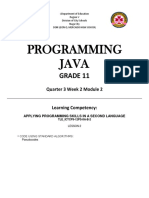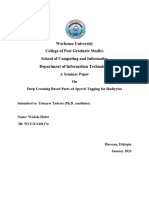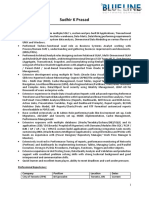0% found this document useful (0 votes)
40 views11 pagesWD L1T01 - Thinking Like A Programmer - Pseudocode
This document introduces the concept of pseudo code, which serves as an informal way to describe algorithms and programming logic for easier understanding. It emphasizes the importance of problem-solving and computational thinking in programming, and provides guidance on using pseudo code to plan and communicate code effectively. Additionally, it includes tasks for practicing pseudo code and understanding algorithms, variables, input/output, and academic integrity.
Uploaded by
fghCopyright
© © All Rights Reserved
We take content rights seriously. If you suspect this is your content, claim it here.
Available Formats
Download as PDF, TXT or read online on Scribd
0% found this document useful (0 votes)
40 views11 pagesWD L1T01 - Thinking Like A Programmer - Pseudocode
This document introduces the concept of pseudo code, which serves as an informal way to describe algorithms and programming logic for easier understanding. It emphasizes the importance of problem-solving and computational thinking in programming, and provides guidance on using pseudo code to plan and communicate code effectively. Additionally, it includes tasks for practicing pseudo code and understanding algorithms, variables, input/output, and academic integrity.
Uploaded by
fghCopyright
© © All Rights Reserved
We take content rights seriously. If you suspect this is your content, claim it here.
Available Formats
Download as PDF, TXT or read online on Scribd
/ 11
